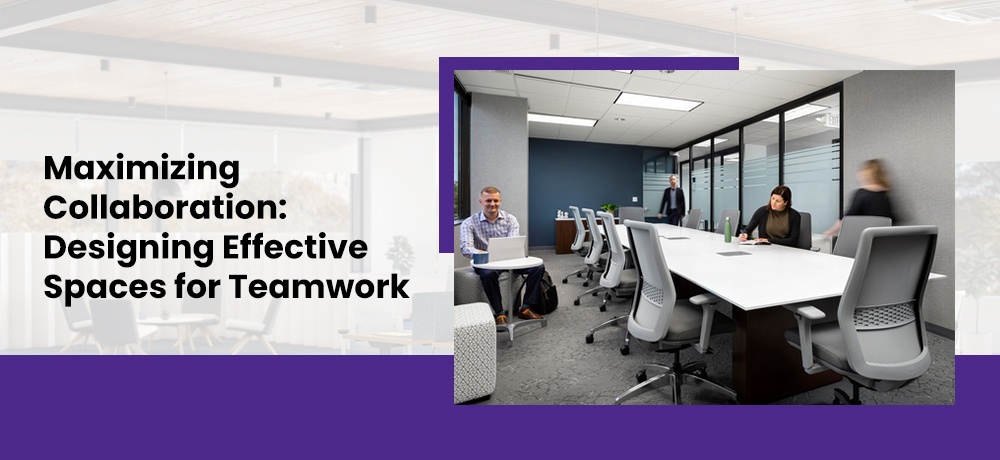Maximizing Collaboration: Designing Effective Spaces for Teamwork

In today's collaborative work environments, effective teamwork is key to driving innovation, productivity, and success. Designing office spaces that foster collaboration and encourage communication among team members is crucial for achieving optimal results. In this blog post, we will explore strategies and ideas for designing effective spaces that maximize collaboration and enhance team dynamics.
1.) Open Concept Layouts:
Open concept office layouts have gained popularity for their ability to facilitate collaboration and communication. By removing physical barriers such as cubicles and walls, you create a sense of openness and transparency that encourages interaction among team members. Open spaces allow for easy information sharing, spontaneous brainstorming sessions, and quick feedback, fostering a collaborative work culture.
2.) Collaborative Workstations:
Create dedicated collaborative workstations or areas within the office that encourage teamwork. These spaces can include shared desks or tables where team members can gather, collaborate, and exchange ideas. Provide ample workspace, comfortable seating, and easy access to power outlets and technology to support collaboration effectively.
3.) Flexible Furniture and Configurations:
Invest in furniture that offers flexibility and adaptability to accommodate different types of collaborative activities. Modular furniture, movable desks, and mobile whiteboards can be easily rearranged to create collaborative zones suited for various team sizes and project requirements. This versatility allows teams to reconfigure the workspace as needed, fostering creativity and collaboration.
4.) Integrated Technology:
Equip collaborative spaces with integrated technology to facilitate communication and information sharing. Install large displays or interactive whiteboards for presentations, brainstorming, and collaborative work. Provide video conferencing tools and quality audio equipment to enable seamless virtual collaboration with remote team members. Integrated technology streamlines communication, boosts productivity, and bridges geographical gaps.
5.) Breakout and Meeting Areas:
Design dedicated breakout areas and meeting spaces where teams can gather for discussions, brainstorming sessions, and informal meetings. These areas should be comfortable, well-equipped, and visually appealing. Incorporate comfortable seating, writable surfaces, and audiovisual equipment to support collaborative activities. Creating a variety of breakout areas throughout the office allows teams to choose the space that best suits their needs.
6.) Collaboration Hubs:
Consider creating collaboration hubs or central meeting points within the office. These hubs can be designed with features like whiteboards, project displays, and comfortable seating. They serve as focal points where teams can come together, share ideas, and collaborate on projects. Collaboration hubs promote a sense of unity and team spirit while facilitating spontaneous interactions.
7.) Privacy and Focus Areas:
While collaboration is essential, it's also important to provide spaces that offer privacy and focus for individual work or small group discussions. Designated quiet areas or private pods allow team members to concentrate on tasks that require uninterrupted focus. These spaces balance collaboration with the need for individual productivity, ensuring a well-rounded work environment.
Communication Tools and Platforms:
Incorporate digital communication tools and platforms that enhance collaboration and streamline workflow. Utilize project management software, team collaboration platforms, and instant messaging apps to facilitate real-time communication, file sharing, and task tracking. These tools enable seamless collaboration, regardless of team members' physical locations.
Designing effective spaces for teamwork and collaboration is crucial in today's dynamic work environment. By implementing open concept layouts, collaborative workstations, flexible furniture, integrated technology, breakout areas, and collaboration hubs, you can create an environment that nurtures collaboration and drives productivity. Remember to strike a balance between collaborative spaces and areas for privacy and focus. By providing the right tools, technology, and physical spaces, you empower teams to work together effectively and unleash their creative potential.